Find out the true meaning behind your birthstone
Birthstones are gems that are associated with a birth month, each stone has a unique meaning and significance. One thing that every person has in common, no matter when they were born, is that everyone has a birthstone which represents a person’s period of birth that is usually the month or zodiac sign. Like horoscope signs, when you ask someone “what is your birthstone?” they almost always know the answer. Today you will commonly see birthstones in jewelry pieces like rings, pendants, bracelets, or earrings as reminders to celebrate your birth month all year long. Birthstones are a part of modern society and since ancient times it is widely believed that wearing your birthstone is a symbol of wellness and good fortune.
Traditionally each month is associated with one birthstone but you will find some months have multiple birthstones. This fact does create some confusion but the multiple options for some months was created in order to allow more affordable options in addition to the traditional more expensive stones. Birthstones carry secrets, attributes and lore that are unique to each gemstone. The wearing of birthstones is thought to bring good luck, good health, and protection.

JANUARY - GARNET
Garnet is the birthstone for those that are born on the month of January. The name ‘garnet’ originates from the medieval Latin ‘granatus’, meaning ‘pomegranate’, in reference to the similarity of the red color. Those born in January are lucky to have the beautiful and diverse garnet as their birthstone. Garnets are commonly red but also come in an extraordinary range of beautiful colors, including pink, orange, yellow, purple and vibrant green. There are even garnets that change color from blue to purple in different lighting. Some believe the true value of the garnet birthstone is its power to bring the wearer good health, wealth and happiness.
According to astrology, garnet helps to eliminate negative feelings and instill greater self-confidence and mental clarity to promote creative thinking and peace of mind. In Medieval times, it was said that garnets could protect its wearer against bad dreams and poisons, and cured depression, relieved fever, hemorrhages, and inflammatory diseases. Garnet is now said to promote love, romantic passion, sensuality and intimacy. It signifies eternal friendship, trust, loyalty and enduring affections.
FEBRUARY - AMETHYST
If you were born in February, your birthstone is Amethyst – the purple variety of quartz that has captivated mankind for millennia. The name ‘amethyst’ comes from the Ancient Greek, derived from the word ‘amethystos’, which means ‘intoxicated’. Ancient wearers believed the gemstone could protect them from drunkenness. Because of its wine-like color, early Greek mythology associated the gem with Bacchus, the god of wine.
Amethyst can be found in the collections of royal families throughout Europe and Asia. Now it is within reach of most consumers. If your birthday is in February, then wearing an amethyst can be a symbol of personal empowerment and inner strength. Amethyst is the gem traditionally given for the 6th wedding anniversary. It was also believed to keep the wearer clear headed and quick witted in battle and business affairs.
Amethyst has now become the gemstone know for meditation, peace, courage, inner strength and clarity of mind. Their healing properties include acting as a natural form of stress relief and attract positive energy while ridding your body of any negative emotions. They are said to help strengthen the immune system and heal any imbalances that lie in the body.
MARCH - AQUAMARINE
Aquamarine is the birthstone for March. This gem is an exceptionally hard stone that boasts a glass-like luster. The beryl family, including aquamarine birthstones evokes the colors of the sea. From deep green-blue to light, slightly greenish blue hues, faceted aquamarines are often free from inclusions and as clear as water, symbolizing purity of spirit and soul.
Aquamarine gets its name from an old Latin expression meaning ‘seawater’. Historically, sailors and seafarers used aquamarine stones as a protective talisman for good luck and to instill a sense of fearlessness in the face of an epic journey. This stone is also known for calming frayed nerves as it channels the soothing qualities of the waves of the sea.
Aquamarine is said to be a powerfully soothing influence on relationships and ensuring a long and happy marriage. Hence, why it considered such a perfect gift on special occasions and to celebrate the 19th wedding anniversary. Aquamarine is most often light in tone and ranges from greenish blue to blue-green. The color is usually more intense in larger stones, and darker blue stones are very valuable.
APRIL - DIAMOND
Sparkling with an internal fire all its own, diamond is one of the world’s most sought-after and adored gemstones. Those born in April are lucky enough to call this scintillating gem their birthstone, a symbol of clarity and strength. Diamond is so strong, in fact, that its name comes from the Greek word ‘adamas’, which means ‘invincible’ or ‘unbreakable’.
As the gemstone with the highest rating on Mohs Hardness Scale, with a score of 10, diamonds have the unique ability to be cut and polished with the utmost brilliance. Their incredible shine and luster have captivated wearers for centuries. Diamonds add light and beauty to any occasion; especially weddings.
Diamonds symbolize invincibility, eternal love and forever. It holds significant meaning for those born in that month, thought to provide the wearer with better relationships and an increase in inner strength. Those who are drawn to a diamond are strong, determined, proud and romantic in nature. Wearing diamond is believed to bring other benefits such as balance, clarity and abundance.
MAY - EMERALD
Emerald, the birthstone for May, has been beloved for millennia, evoking rebirth and renewal. The name ‘emerald’ comes from the Greek 'smaragdos' via the old French 'esmeralde', which means green gemstone. Variations of this rich green color suggest soothing, lush gardens. Legend has it that emerald has the power to make its wearer more intelligent and quick-witted, and it was once believed to cure diseases like cholera and malaria. Today, it is the gemstone given for the 20th and 35th wedding anniversaries. The ancient Romans believed Emerald represented Venus, the Goddess of beauty and love. Hence why the color green has been the color of beauty and constant, unconditional love for centuries.
A deeper and more vivid color of green signifies a more valuable gemstone. The most valuable and beautiful emeralds exhibit an intense bluish hue in addition to their bold green color. Emeralds, among the rarest of gems, are almost always found with birthmarks, also known as inclusions. Some inclusions are expected and do not detract from the value of the stone as much as with other gemstones.
JUNE – PEARL / ALEXANDRITE
If you are blowing out birthday candles during the month of June, you have two beautiful birthstones to choose from: Pearl and Alexandrite.
Pearl
Unlike most gemstones that are found within the Earth, pearls are unique because they are the only gemstone formed within a living creature.. They are created inside the shells of certain species of oysters and clams. Some pearls are found naturally in mollusks that inhabit the sea or freshwater settings such as rivers. However, many pearls today are cultured-raised in oyster farms that sustain a thriving pearl industry. Cultured pearls come in many beautiful colors, ranging from pale cream and white to rose, lilac, green, gold, gray and black. There are four main types of cultured pearls - Akoya, South Sea, Tahitian and Freshwater, each with unique qualities that separates it from the others.
Pearls have long been associated with purity, humility and innocence. So, it may be said that the June birthstone meaning is sweet simplicity. As such, pearls were traditionally given as a wedding gift. The pearl birthstone was also thought to have beneficial properties. In the ancient Sanskrit text the Atharvaveda, pearls were said to bestow long life and prosperity. In Asia, pearls were believed to help alleviate indigestion and hemorrhages. Some 19th century Arab physicians stated that pearl powder improved eyesight, quieted nervous tremors, and eased depression.
Alexandrite
Alexandrite is named after Prince Alexander of Russia, who became Czar Alexander II in 1855. Discovered in 1839 on the prince’s birthday, major alexandrite was found in an emerald mine in the Ural Mountains of Russia. The stone was believed to bring good luck. This gem is exceptionally rare and valuable, and therefore very expensive. Sri Lanka is the main source of alexandrite today, and the stones have also been found in Brazil, Madagascar, Zimbabwe, Tanzania, and Myanmar (Burma).
If you love magic, you will love alexandrite, also known as ‘the color-change gem’. Alexandrite is the rare variety of the mineral chrysoberyl that changes color in different lighting. Most prized are those alexandrite birthstones that show a vivid green to bluish green in daylight or fluorescent light, and an intense red to purplish red in incandescent light. Major alexandrite deposits were first discovered in 1830 in Russia’s Ural Mountains.
Alexandrite is believed to shower immense prosperity and good luck on its wearer. This gemstone can strengthen your self-discipline when you need it the most. Wearing alexandrite stone helps the person in overcoming professional obstacles and strive for the honor. Publicity, success, and prosperity are considered to be presented on the person who wears this rare gemstone. Apart from this, alexandrite is also considered as the ideal gemstone and the perfect gift for the 55th wedding anniversary.
JULY - RUBY
Ruby is the July birthstone and it is one of the most coveted of gems. The name is derived from the Latin word ‘ruber’, meaning ‘red’ - the color of love, passion, courage and emotion. For centuries, this gem has been considered the king of all gems. It was believed that wearing a fine red ruby bestowed good fortune upon its owner. Rubies have been the prized possession of emperors and kings throughout the ages, and to this day remain one of the most valued gemstones.
The finest color of the birthstone for July is a deep red with a hint of purple, called “pigeon’s blood” in the trade. The color pigeon blood ruby red is not associated with the color of a pigeon’s blood but rather the color of a white pigeon’s eye. In addition to being the July birthstone, ruby is traditionally given for the 15th and 40th wedding anniversaries.
In ancient India, ruby was called the “king of precious stones” for its rarity, 9 on the hardness scale (second only to diamond), beauty and seemingly mystical powers. Long associated with the life force blood, ruby was a symbol of power and youthful energy in Indian jewelry. In past centuries, some believed this birthstone for July could predict misfortune or danger, and others claimed it would cure inflammatory diseases and soothe anger. It is believed the wearer of a ruby is blessed with health, wealth, wisdom and outstanding success in heart affair.
AUGUST - PERIDOT
Peridot is the birthstone for those that are born on the month of August. The word ‘peridot’ comes from the Arabic ‘faridat’, meaning gem. The peridot is generally a light green color. It is a unique birthstone because it is always a shade of green and no other color. This August birthstone was valued in many ancient and medieval cultures. It appeared in priests’ jewelry as early as the second century BCE and later in the chalices and churches of medieval Europe. The peridot birthstone has also been used for centuries as a protective talisman, shielding the owner from evil spirits and terrors of the night. Peridot is the gem given to celebrate a 16th wedding anniversary.
In ancient times, it was believed that peridot was a gift from mother nature to celebrate the annual creation of a new world. When presented as a gift, peridot is said to bring the wearer magical powers and healing properties to protect against nightmares. It is also said to instill power and influence. Peridot is associated with harmony, good health, restful sleep and peacefulness. Known as the stone of compassion, peridot calms anger by giving renewal to all things. Also, peridot is believed to help depression.
SEPTEMBER - SAPPHIRE
The September birthstone is sapphire – a gem that’s been cherished for thousands of years. ‘Sapphire’ comes from the Greek word ‘sappheiros’ and blue sapphire is one of the most popular colored stones. Although the term sapphire usually refers to the blue variety of corundum (ruby is the red variety), this birthstone comes in a rainbow of other colors. They also come in pink, yellow, orange, green, peach and violet colors. The most sought-after color of fancy sapphire is the rare and beautiful Padparadscha - a pink-orange corundum with a distinctive salmon color reminiscent of a tropical sunset. Sapphires have been long associated with royalty and romance and are also said to symbolize fidelity and the soul.
Sapphires are among the most durable naturally occurring elements in the world. Gemstones are rated on their ability to withstand scratching based on a system called the Mohs Scale of Hardness, and sapphires score a 9 out of 10. The durability of sapphires makes them an excellent choice for engagement rings and other jewelry you plan to wear every day. Sapphires are one of the most popular engagement gemstones today.
Throughout history, various cultures have attributed mystical powers to sapphires, including heavenly powers, truth, innocence, peace and good health. In ancient times, it was believed that sapphires protected their wearers from evil. Because of the blue color, which they associated with the heavens, Europeans in the Middle Ages believed that sapphires cured eye diseases and preserved chastity, along with providing other heavenly blessings. Sapphires have also been used to symbolize nobility and faithfulness.
OCTOBER – TOURMALINE / OPAL
People born in October have the opportunity to wear two different birthstones. Tourmaline is the birthstone for the month of October, along with Opal.
Tourmaline
Tourmaline is the newer October birthstone. The name comes from the Sinhalese word ‘toramalli’, which means ‘stone with mixed colors’, because it often has multiple colors in one crystal. Very few gems match tourmaline’s dazzling array of colors. Perhaps this is why ancient mystics believed this October birthstone could inspire artistic expression – it has a color palette for every mood. Among the most popular are the pink and red rubellites, the emerald green “chrome” tourmalines, and the neon green and blue-to-violet “paraíba” tourmalines. Because of its vast range of colors, tourmaline was often mistaken for other gemstones.
Different colors of tourmaline are thought to have their own healing properties. Black tourmaline is believed to protect the wearer and give a sense of self-confidence. Pink tourmaline embodies love and is associated with compassion and gentleness. Green tourmaline promotes courage, strength and stamina. Tourmaline is given to celebrate the 8th wedding anniversary. In general, tourmaline is believed to be an excellent tool for energizing and balancing the chakras. Tourmaline aids in understanding oneself and others and promotes self-confidence and diminishes fear and is used by modern practitioners to treat stress and trauma.
Opal
The name of this, the traditional October birthstone, is believed to have originated in India (the source of the first opals brought to the Western world), where in Sanskrit it was called ‘upala’, a ‘precious stone’. In ancient Rome, this became ‘opalus’. Most opals are valued for their shifting colors in rainbow hues – a phenomenon known as 'play-of-color'. It is believed to bring luck, health and love to its wearer.
In ancient times, the opal was known as the queen of gems because it encompassed the colors of all other gems. Each opal is truly one-of-a-kind, as unique as our fingerprints. Some prefer the calming flashes of blues and greens; others love the bright reds and yellows. As you turn and move the opal, the color plays and shifts, giving you a gem that can be worn with a plethora of ensembles.
Ancient Greeks thought opals bestowed the gift of prophesy and protection from disease. Europeans long maintained opal to be a symbol of purity, hope and truth. Hundreds of years ago, opal was believed to embody the virtues and powers of all colored stones. Opal is also the stone given to celebrate the 14th wedding anniversary.
NOVEMBER – CITRINE / YELLOW TOPAZ
November birthdays have two options for birthstones: Citrine and Yellow Topaz. Known for having beautiful yellow and orange hues, both of these gemstones make great options for everyday wear!
Citrine
November’s birthstone, citrine, this bright shining gem is said to be a gift from the sun. The name ‘citrine’, which is French for ‘lemon’, fits well with its color range of juicy yellow to a bright orange-brown. Most people choose a citrine based on their personal preference, but some of the most sought-after citrine gemstones have a clear, radiant yellowish to brownish red color. In ancient times, citrine was carried as a protection against snake venom and evil thoughts. Today, it is known as the merchant’s stone and is associated with success and prosperity. With a hardness of 7 on the Mohs scale, citrine is very durable against scratches and everyday wear-and-tear, making it a lovely option for large, wearable jewelry.
This gem is also known as healing quartz, because citrine promotes vitality and energy in whomever wears it. It is also said to spark imagination and encourage fresh beginnings and prosperity. In ancient times, citrine was carried as a protection against snake venom and evil thoughts. The Egyptians were among the first to discover the yellow stone and used the gems as talismans. While thought to be added for decorative purposes, the stone was also considered as protection. Today, citrine is known as the ‘merchant’s stone’ and is associated with success and wealth.
Yellow Topaz
Yellow topaz belongs to the artist. Inspiring creativity, November's birthstone promotes self-expression. Yellow topaz also promotes concentration and a deep appreciation for beauty. Furthermore, it allows its wearer to realize their true potential, combining knowledge and experience to produce wisdom. In concert with the courage and confidence it provides, yellow topaz offers its wearer the strength to live life according to their own values. In addition, its cheerful energy promotes the fulfillment of personal dreams, as well as the joy of sharing in the good fortune of others. Topaz is quite durable rating 8 on the Mohs scale.
DECEMBER – BLUE TOPAZ / BLUE ZIRCON
December birthdays have two options for birthstones: Blue Topaz and Blue Zircon. Known for having rich blue hues. This is why November babies get the choice of either stone.
Blue Topaz
Blue topaz is the more prominently known birthstone for December and displays a range of blue shapes to choose from pale to deep. The name ‘topaz’ derives from ‘topazios’, the ancient Greek name for St. John’s Island in the Red Sea. This gemstone is believed to ensure long life, beauty and intelligence. Blue topaz was thought to heal mental disorders and physical ailments to prevent death in the Middle Ages. It was worn by the Egyptians as an amulet to protect them from getting injuries.
Blue topaz, although increasingly abundant in the market, very rarely occurs naturally and is often been produced by the treatment of white topaz. This is done with radiation and heat. The two varieties of treated blue topaz have become dominant in the market are known as London blue and Swiss blue topaz. Swiss blue is bright and light in tone. It has a moderate saturation. London blue is a very beautiful dark blue with a moderate to dark saturation.
For one giving the gift of topaz, it is symbolic of fidelity and love. It can be used to calm an individual’s hot temper, cure insanity, improve weakened vision, relieve asthma attacks, and bring sleep to those inflicted by insomnia. Some say this birthstone can help with digestion and stimulating your metabolism.
Blue Zircon
Blue zircon shares the honor of being December’s birthstone with another beautiful blue stone. Although zircon sounds like some sort of synthetic material, it in fact is not. Blue zircon is a natural stone. Unfortunately, this confusion has had a harmful effect on the popularity of the stone - as many people do not know zircon has natural origins. It is actually the oldest mineral on earth, according to the Gemological Institute of America.
The name ‘zircon’ likely comes from the Persian word ‘zargun’, meaning ‘gold-colored’. Others trace it to the Arabic zarkun, meaning ‘vermillion’. Zircon is a symbol of chastity, virtuousness and trustworthiness, and is thought to protect the wearer against negative energy. From a personal perspective, it is a healing and soothing stone, and can help with clearing the mind. Zircon promotes wisdom and can help to remind you of wishes you may have forgotten and support in purifying your intentions to return to those wishes.



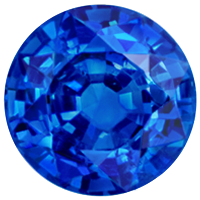 BLUE SAPPHIRE
BLUE SAPPHIRE 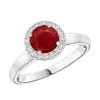
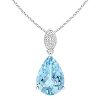
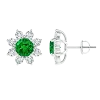
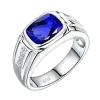





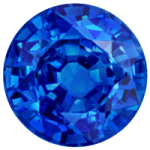 Blue Sapphire
Blue Sapphire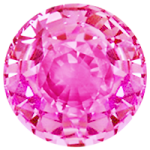 Pink Sapphire
Pink Sapphire Yellow Sapphire
Yellow Sapphire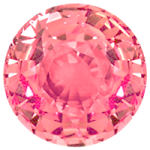 Padparadscha Sapphire
Padparadscha Sapphire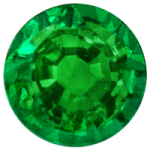 Green Sapphire
Green Sapphire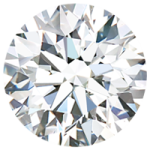 White Sapphire
White Sapphire Amethyst
Amethyst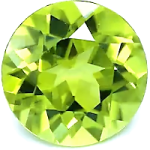 Peridot
Peridot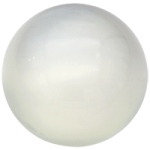 Moonstone
Moonstone Garnet
Garnet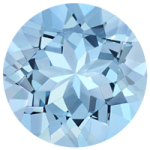 Aquamarine
Aquamarine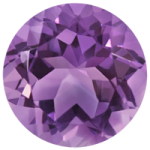 Spinel
Spinel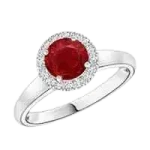 Ladies Rings
Ladies Rings Pendants
Pendants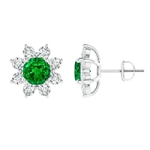 Earrings
Earrings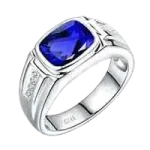 Gent’s Rings
Gent’s Rings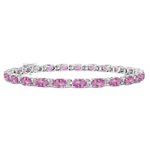 Bracelet
Bracelet